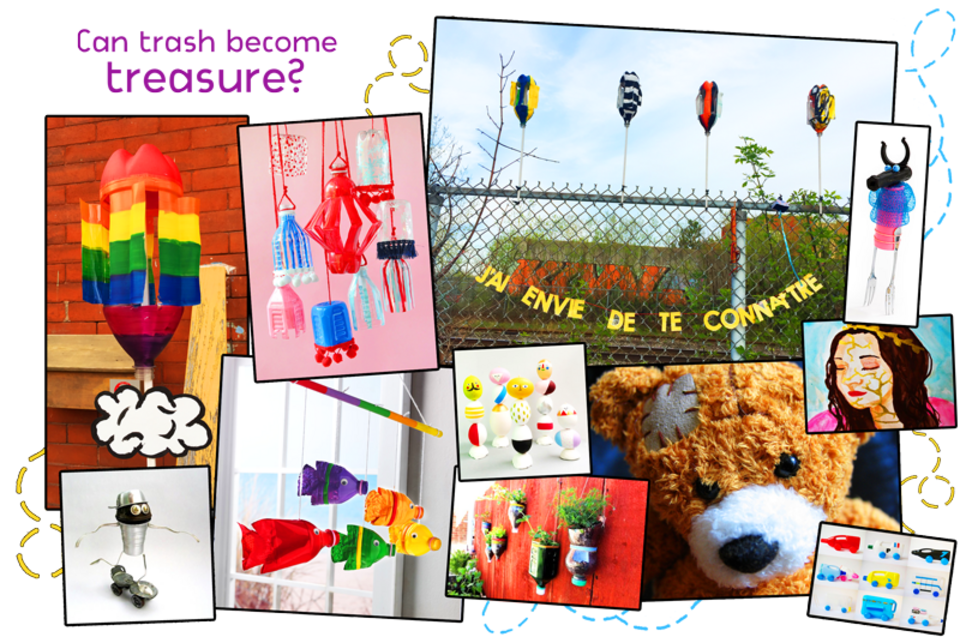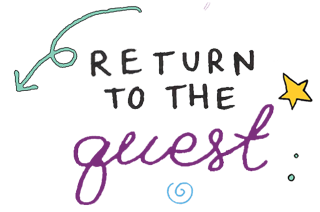
Resilient Treasure (Part 2)
You are now at the second part of your creative project! If you have already finished the first part—Creative Conception—you can continue your quest with this activity. But if you haven't finished the first part yet, then start with that one, then you can come back here.
...
| Objective: To create your resilient treasure! |
Duration: 60 to 90 minutes
Material:
- A sheet of paper or a piece of cardboard
- Coloured pencils and markers, eraser
- Scissors, glue, arts and crafts materials, recycled materials
- A rejected object
Instructions:
- Reread your sheet. Take a moment to reread your ideas and review your Creative Conception draft. This will refresh your memory and maybe even give you some new ideas before you get into the final part of your project.
- Create resilient treasure. Here we go! It's time for you to create the resilient treasure you have imagined, with all your talent and care... but also—in the spirit of Wabi-Sabi—with appreciation for the imperfections in your creation!
- Think about your creative experience. Finally, after you've finished, ask yourself: How did it go? Did you succeed in realizing the vision you had at the beginning?
- Conception: Does your creation represent what you think resilience is? How do your creative choices reflect your perspectives on the concept?
- Application: What lessons can be learned from your interpretation? Is what we reject or discard necessarily worthless? Why or why not?
- Alternative: What could you have changed? Are there nuances that you didn't include? Imagine that your treasure is discovered by another person. Do you think that this person would consider your creation to be a precious treasure? Does value have to be recognized by everyone to exist... or does it only take one person to make it shine?
You can write your answers on the back of your conception sheet to keep track of your evolving thoughts.
...
Bonus: How about trying to test your treasure's resilience... by destroying it? Ah, do you not want to destroy it? But the object was abandoned, forgotten, discarded, destined to be scrapped! What has changed? When you work really hard on something, it can be very difficult to part with it afterwards. But, could it sometimes be better to get rid of it? To test this idea, instead of destroying your precious treasure, take nice pictures of what's around you—at home or while you're out on a stroll. When you have several pictures that you particularly like... delete them! Is it hard to press that red button? How are you feeling in your body? What are you thinking about before, during and after the fateful moment? How can something that didn't even exist a few moments ago now be so valuable to you? Should we try to be less attached? Why or why not? |

| Tricks for tots: To build your resilient treasure, you can ask a family member for help. As you work to enhance your discarded object, ask yourself if you can be resilient even if you get help. To be resilient, do you have to face challenges alone? Or can help make you more resilient? Why or why not? |
| Tips for teens: Should wounds be cherished? Some might say that the scars you carry on your body or in your heart—your physical or emotional wounds—are like traces of your history; they make you who you are. They can be seen as proof that you have overcome challenges, like treasures of your resilience. But is it okay to want to get rid of them if, for example, they remind you of a difficult time that you would rather forget? Can we reject the past? Some people have scars as a result of devastating illnesses or terrible abuse, and choose to get tattoos to hide those horrible wounds and reclaim their bodies so as to show that they no longer belong to the brutes who mutilated them. If you had to create a tattoo to hide a wound and celebrate who you are in spite of it, how would it look? If you'd like, you can draw your body art on a piece of paper—or on a salvaged object. |
Share your creative reflections by sending them via email.
Include photos of your projects and notes of your thoughts, as well as your first name and your age!


